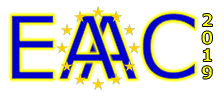Hosing instability is the most important instability needs to be controlled when building a future linear collider using plasma based acceleration. The normal method for mitigating the hosing instability requires energy chirps on the beam or longitudinally varying focusing force. However, these methods require additional manipulation on the witness beam, and the beam centroid oscillation...
Plasma accelerators have been proposed as drivers for the next generation of colliders. Achieving high efficiency while preserving excellent beam quality (low emittance) is critical to realizing this application. High efficiency requires large longitudinal wakefield excitation by the witness beam, and this has an associated large transverse wakefield that will drive the hosing instability....
While laser-plasma accelerators provide multi-GeV electron beams today, the acceleration to higher energies is limited. The sub-luminal group-velocity of plasma waves let electrons outrun the accelerating field. We present Traveling-Wave Electron Acceleration, a novel compact laser-plasma accelerator scheme which circumvents the LWFA constraints of electron beam dephasing, laser pulse...

